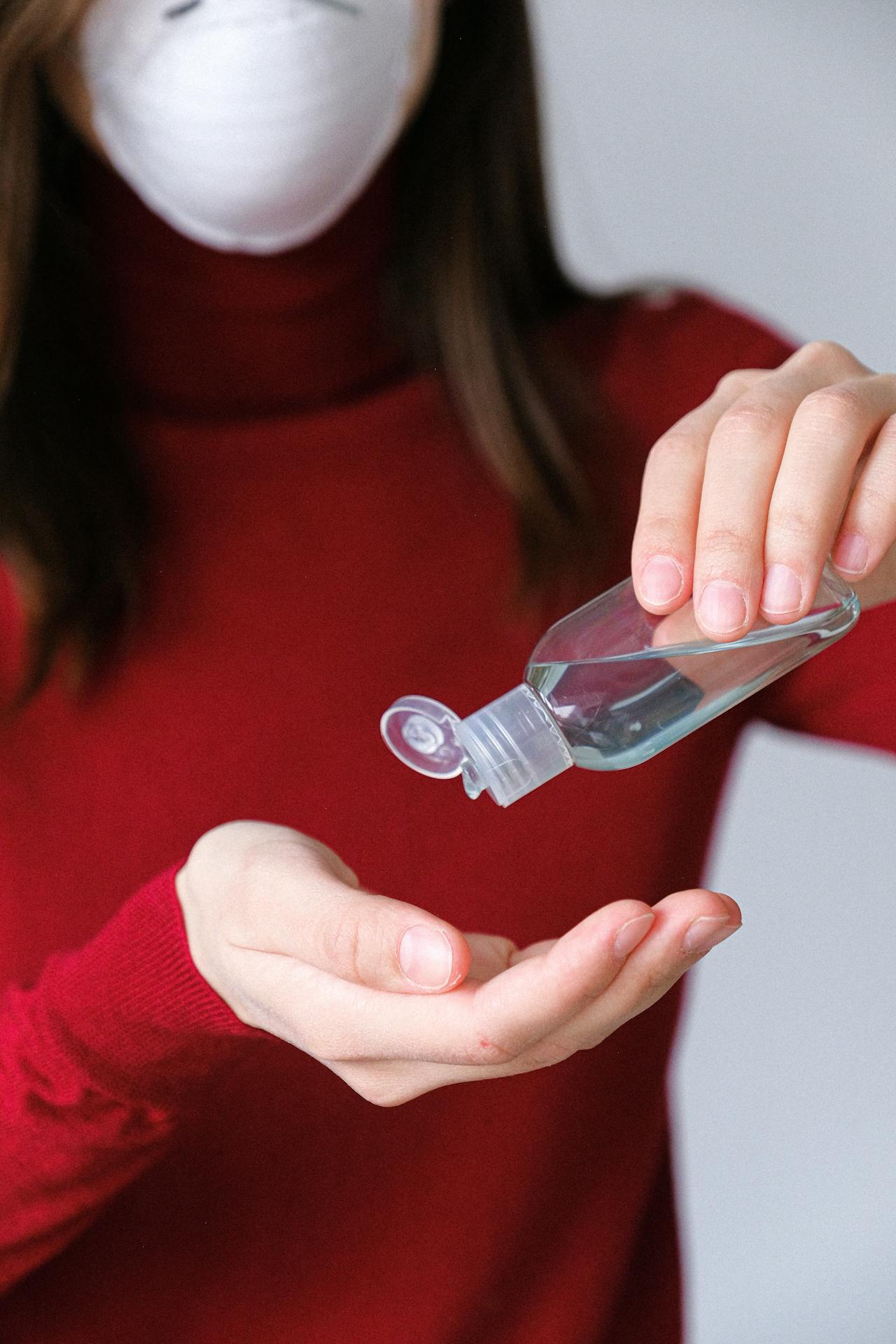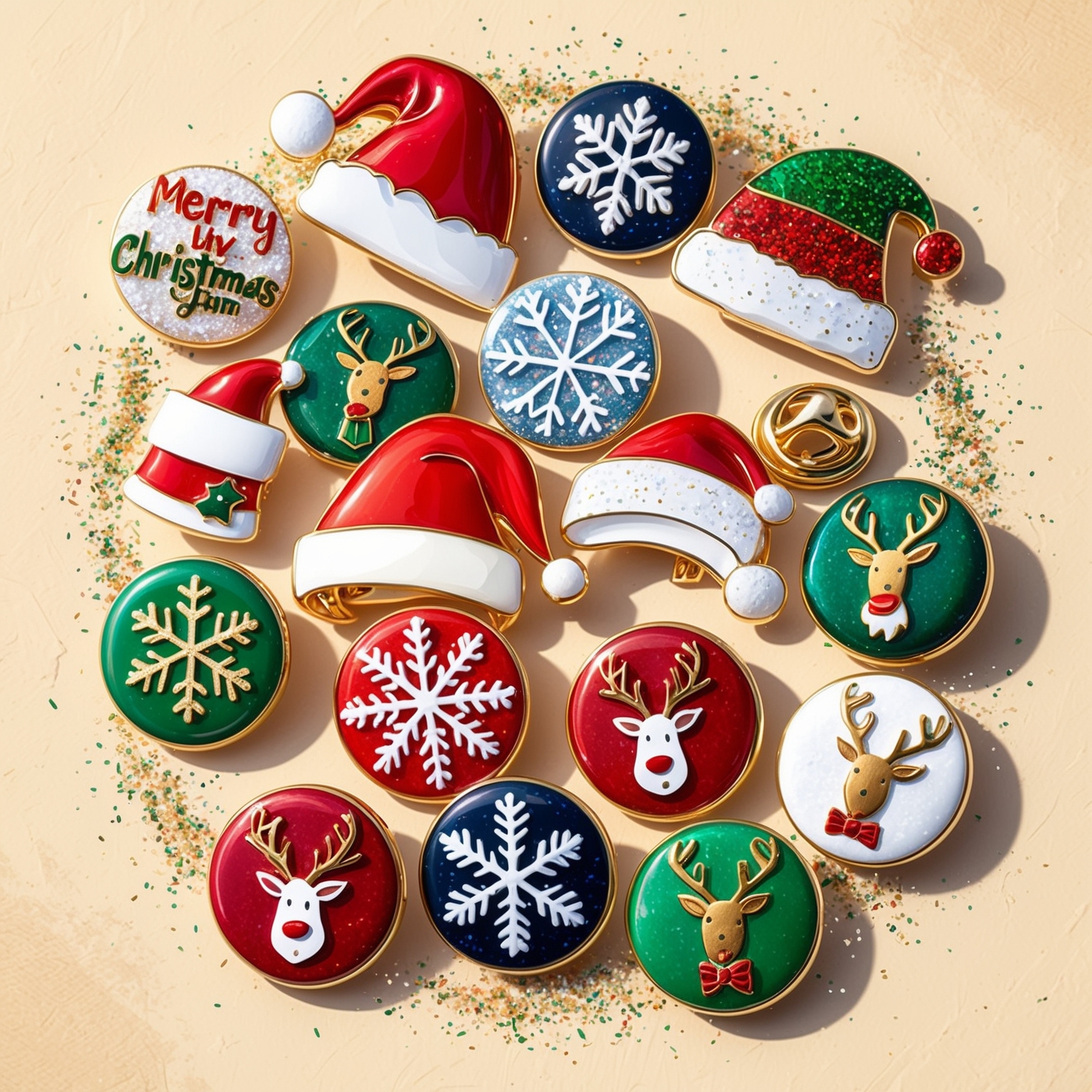Trading pins are not just collectibles; they are cherished mementos that capture memories, represent affiliations, and symbolize achievements. Whether you’ve amassed a collection of trading pins from sporting events, Disney parks, or other special occasions, maintaining these pins in pristine condition is essential to preserving their value and sentimental significance. Proper care and storage can prevent damage, tarnishing, and wear, ensuring that your collection remains a source of pride for years to come.
In this comprehensive guide, we will explore the best practices for maintaining trading pins, from cleaning and storage to display and handling. Whether you’re a seasoned collector or just starting out, these tips will help you keep your trading pins looking their best and protect your investment.
1. The Importance of Maintaining Trading Pins
Preserving Value and Rarity
For many collectors, trading pins hold both sentimental and monetary value. Rare or limited-edition pins can appreciate over time, making them valuable assets. However, the condition of the pins plays a significant role in determining their value. A pin that is well-maintained and free from damage will be worth more than one that shows signs of wear, tarnish, or corrosion. By maintaining your trading pins in pristine condition, you not only preserve their beauty but also protect their potential resale value.
Protecting Sentimental Memories
Trading pins often represent special moments, whether it’s a trip to a Disney park, participation in a sports tournament, or attendance at a significant event. These pins serve as tangible reminders of those experiences, and maintaining them in excellent condition ensures that the memories they represent remain intact. A well-cared-for pin can continue to evoke the same emotions and nostalgia as the day it was acquired.
Enhancing Display and Enjoyment
Displaying your trading pins allows you to showcase your collection and enjoy the visual appeal of these miniature works of art. However, damaged or tarnished pins can detract from the overall aesthetic of your display. By maintaining your pins in pristine condition, you ensure that they continue to shine and stand out, enhancing the enjoyment of your collection.
2. Cleaning and Polishing Trading Pins
Regular Cleaning Routine
Keeping your trading pins clean is one of the most important aspects of maintaining them in pristine condition. Dust, dirt, and oils from handling can accumulate on the surface of your pins, dulling their shine and potentially causing long-term damage if not addressed.
- Dusting: Regularly dust your trading pins using a soft, lint-free cloth or a microfiber cloth. Gently wipe the surface of each pin to remove any dust or debris. Avoid using abrasive materials or rough cloths that could scratch the pin’s surface.
- Handling: When handling your trading pins, it’s a good idea to wear gloves, especially if the pins are made of metals that are prone to tarnishing. If you don’t have gloves, make sure your hands are clean and dry before touching the pins to prevent oils from your skin from transferring to the metal.
Cleaning Tarnished or Dirty Pins
If your trading pins have become tarnished or are showing signs of dirt buildup, you may need to perform a more thorough cleaning. However, it’s important to use gentle methods to avoid damaging the pins.
- Mild Soap and Water: For most trading pins, a solution of mild soap and water is effective for cleaning. Mix a small amount of dish soap with warm water, and dip a soft cloth or cotton swab into the solution. Gently clean the surface of the pin, paying attention to any crevices or detailed areas. After cleaning, rinse the pin with clean water and pat it dry with a soft cloth.
- Polishing Metal Pins: If your trading pins are made of metal and have tarnished, you can use a metal polish specifically designed for the type of metal (e.g., brass, silver, or gold). Apply a small amount of polish to a soft cloth and gently rub it onto the pin in circular motions. Be cautious not to over-polish, as this can wear away the pin’s finish. After polishing, wipe away any residue with a clean cloth.
- Cleaning Enamel Pins: For enamel pins, avoid using harsh chemicals or abrasive materials, as these can damage the enamel. Instead, use a soft cloth dampened with water or a mild soap solution to clean the surface. If the enamel has become scratched or chipped, it’s best to consult a professional for repair, as attempting to fix it yourself could cause further damage.
Avoiding Common Cleaning Mistakes
When cleaning your trading pins, it’s important to avoid certain common mistakes that could cause damage:
- Avoid Harsh Chemicals: Never use harsh chemicals such as bleach, ammonia, or acetone to clean your trading pins. These substances can corrode metal, damage enamel, and remove protective coatings.
- Don’t Soak Pins: Soaking your trading pins in water or cleaning solutions can cause damage, especially if the pins have delicate components or are made from multiple materials. Instead, clean the pins using a damp cloth or cotton swab.
- Beware of Abrasive Materials: Abrasive materials such as steel wool, rough sponges, or abrasive cloths can scratch the surface of your trading pins and remove delicate finishes. Always use soft, non-abrasive materials for cleaning.
3. Proper Storage Techniques for Trading Pins
Choosing the Right Storage Environment
Proper storage is crucial for maintaining trading pins in pristine condition. The environment in which you store your pins can have a significant impact on their longevity and appearance.
- Temperature and Humidity: Trading pins should be stored in a cool, dry environment. High humidity can cause metals to tarnish and corrode, while extreme temperatures can warp or damage materials. Avoid storing pins in basements, attics, or other areas prone to temperature fluctuations and humidity.
- Light Exposure: Prolonged exposure to direct sunlight or artificial light can cause colors to fade and materials to degrade. Store your trading pins in a location where they are protected from direct light, such as in a drawer, storage box, or display case with UV protection.
- Air Quality: Airborne pollutants, such as dust, smoke, and chemicals, can accumulate on the surface of your trading pins and cause damage over time. Storing your pins in a sealed container or display case can help protect them from these environmental factors.
Selecting Appropriate Storage Containers
The containers you choose for storing your trading pins can make a significant difference in their preservation. Here are some options to consider:
- Pin Albums: Pin albums are specifically designed for storing and organizing trading pins. These albums typically feature pages with clear plastic pockets or fabric backing that allow you to easily insert and remove pins. The albums keep your pins secure, organized, and protected from dust and light.
- Display Cases: Display cases are an excellent option for storing and showcasing your trading pins. Look for cases with glass or acrylic fronts that provide UV protection to prevent fading. Some display cases come with felt or foam backing to hold pins securely in place. Make sure the case is well-ventilated to prevent moisture buildup.
- Pin Bags: Pin bags are portable storage solutions that allow you to carry and organize your trading pins on the go. These bags often feature padded pages or compartments to keep pins secure and protected. They are ideal for collectors who frequently attend pin trading events or travel with their collection.
- Storage Boxes: For collectors with large collections or those who prefer to store their pins in a compact space, storage boxes with individual compartments are a great option. Choose boxes with soft, non-abrasive interiors to prevent scratching, and consider using anti-tarnish strips or silica gel packets to control moisture.
Preventing Damage During Storage
To prevent damage during storage, it’s important to take a few additional precautions:
- Use Backing Cards or Foam Inserts: If your trading pins came with backing cards or foam inserts, it’s a good idea to keep these in place during storage. They provide an extra layer of protection and help prevent the pins from rubbing against each other.
- Avoid Overcrowding: Overcrowding pins in a storage container can cause them to scratch or dent each other. Make sure there is enough space between pins to prevent contact, and consider using dividers or foam padding to keep them separated.
- Check for Moisture: Periodically check your storage containers for signs of moisture or condensation. If you notice any, remove the pins immediately and dry them thoroughly before returning them to storage. Consider adding moisture-absorbing packets to your storage containers to control humidity.
4. Displaying Trading Pins with Care
Choosing the Right Display Method
Displaying your trading pins allows you to enjoy and share your collection, but it’s important to choose a display method that protects the pins from damage.
- Shadow Boxes: Shadow boxes are a popular choice for displaying trading pins. These deep-set frames allow you to arrange pins on a fabric or foam backing, and the glass front protects them from dust and damage. Shadow boxes are ideal for creating themed displays or showcasing special sets of pins.
- Pinboards: Pinboards are versatile and customizable display options that allow you to easily rearrange your trading pins. Choose a pinboard with a soft, fabric-covered surface to prevent damage to the pins. Pinboards can be framed for a polished look or used as part of a larger gallery wall.
- Acrylic Displays: Acrylic displays offer a sleek and modern way to showcase trading pins. These displays often feature clear, acrylic shelves or slots that hold pins securely in place while allowing for easy viewing. Some acrylic displays are designed to rotate, making it easy to see all sides of the collection.
- Custom Displays: For a unique and personalized display, consider creating a custom display case or board that reflects the theme of your collection. You can use materials such as wood, metal, or fabric to create a display that complements the style and colors of your pins.
Protecting Pins from Environmental Damage
When displaying your trading pins, it’s important to protect them from environmental factors that could cause damage.
- Avoid Direct Sunlight: Display your trading pins in a location where they are protected from direct sunlight. UV rays can cause colors to fade and materials to degrade over time. Consider using UV-protective glass in display cases or positioning the display away from windows.
- Control Temperature and Humidity: Ensure that the display area is kept at a stable temperature and humidity level. Avoid placing displays near heat sources, air vents, or areas with high humidity, such as bathrooms or kitchens.
- Prevent Dust Buildup: Dust can accumulate on the surface of your trading pins, dulling their appearance and potentially causing damage. Regularly dust your display using a soft, lint-free cloth or a microfiber duster. If the display case has a glass front, clean the glass with a gentle glass cleaner to keep it clear and free of smudges.
Rotating Your Display
Rotating the pins you display can help prevent long-term exposure to light and environmental factors, which can cause fading and wear. By periodically changing the pins on display, you can also keep your collection fresh and interesting.
- Seasonal Displays: Consider creating seasonal displays that showcase different themes or sets of pins throughout the year. For example, you might display holiday-themed pins during the winter months or sport-themed pins during major athletic events.
- Event-Specific Displays: If you’ve acquired trading pins from specific events, create displays that highlight those occasions. For example, you might create a display featuring pins from a particular year’s sports tournaments, concerts, or festivals.
- Collector’s Choice: Allow yourself the flexibility to rotate pins based on your current interests or favorites. This approach keeps the display dynamic and allows you to showcase different parts of your collection at different times.
5. Handling and Transporting Trading Pins
Proper Handling Techniques
Handling your trading pins with care is essential to preventing damage, scratches, and wear. Here are some best practices for handling trading pins:
- Use Gloves: When handling valuable or delicate pins, consider wearing cotton or nitrile gloves to prevent oils, dirt, and fingerprints from transferring to the pins. This is especially important for metal pins that are prone to tarnishing.
- Hold by the Edges: If you’re not wearing gloves, make sure to hold the pins by their edges rather than touching the front or back. This minimizes the risk of leaving fingerprints or smudges on the pin’s surface.
- Avoid Dropping: Dropping a pin can cause scratches, dents, or chips, especially if the pin lands on a hard surface. When removing or inserting pins into a display, do so over a soft surface, such as a table covered with a cloth or foam pad, to cushion any accidental drops.
Safe Transporting Practices
Transporting your trading pins requires careful planning to ensure they arrive at their destination in pristine condition. Whether you’re taking your collection to a trading event, a show, or simply moving it to a new location, follow these guidelines for safe transportation:
- Use Protective Cases: Invest in protective cases specifically designed for trading pins. These cases often feature foam inserts, padded compartments, or secure pockets that keep pins organized and protected during transport. Look for cases with sturdy exteriors to protect against impact.
- Pack Pins Securely: If you’re using a bag or box that doesn’t have built-in padding, wrap each pin individually in soft tissue paper or place them in small plastic bags to prevent scratches. Consider using bubble wrap or foam padding to add an extra layer of protection.
- Avoid Overpacking: Don’t overcrowd your pin storage during transport, as this increases the risk of pins rubbing against each other and causing scratches or damage. Ensure there is enough space between pins and compartments to keep them secure.
- Check for Stability: Before transporting your pins, check that the storage case or container is stable and secure. Ensure that the pins won’t shift during transport, which could lead to damage. If necessary, add additional padding or dividers to keep everything in place.
- Handle with Care: Treat the container or case as fragile, even if it’s sturdy. Avoid rough handling, dropping, or stacking heavy items on top of it. If you’re traveling by car, place the container on a flat, stable surface where it won’t slide around during the journey.
6. Special Considerations for Valuable and Vintage Pins
Authenticating Vintage and Rare Pins
If you have vintage or rare trading pins in your collection, it’s important to authenticate them to verify their value and provenance. Here are some steps to take:
- Consult Experts: Work with a reputable dealer, appraiser, or authentication service that specializes in trading pins. These experts can examine the pin’s markings, materials, and construction to determine its authenticity.
- Check for Hallmarks and Markings: Many valuable pins have hallmarks, serial numbers, or maker’s marks that indicate their origin and authenticity. Research these markings and compare them to known examples to verify the pin’s legitimacy.
- Review Provenance: If the pin has a documented history of ownership or is associated with a significant event, ensure that the provenance is well-documented. This adds to the pin’s value and authenticity.
Storing Valuable Pins
For high-value or rare pins, extra precautions are necessary to ensure their preservation:
- Use Archival-Quality Storage: Invest in archival-quality storage materials that are acid-free and designed to protect delicate items. This includes storage boxes, tissue paper, and envelopes that won’t degrade over time.
- Consider Climate Control: If your collection includes extremely valuable or fragile pins, consider storing them in a climate-controlled environment where temperature and humidity are carefully regulated.
- Secure Storage: For pins of significant value, you may want to store them in a secure location, such as a safe or lockable display case. Ensure that the storage area is protected from theft, fire, and other potential hazards.
Displaying Valuable Pins
When displaying valuable trading pins, it’s important to balance visibility with protection:
- Use UV-Protective Glass: If displaying pins in a case or frame, opt for UV-protective glass to prevent fading and damage from light exposure.
- Limit Handling: Minimize handling of valuable pins to reduce the risk of damage. Consider using a display method that allows the pins to be viewed without frequent removal or repositioning.
- Document the Collection: Keep detailed records of your valuable pins, including photographs, descriptions, and any relevant provenance. This documentation is important for insurance purposes and can help verify the pin’s value if you decide to sell or trade it.
The Art of Maintaining Trading Pins
Maintaining trading pins in pristine condition is an essential aspect of collecting that ensures their value, beauty, and significance are preserved for years to come. By following the best practices outlined in this guide—from regular cleaning and proper storage to careful handling and thoughtful display—you can protect your collection and enjoy it to the fullest.
Whether your trading pins are treasured souvenirs, valuable investments, or simply a reflection of your personal interests, caring for them with diligence and attention to detail will allow you to appreciate their artistry and meaning for years to come. As you continue to build and curate your collection, remember that each pin tells a story, and by maintaining them in pristine condition, you ensure that those stories remain vivid and enduring.
If you are interested in ordering some high-quality lapel pins, feel free to call us at our Toll free number 1-877-513-4811 or fill out one of our FREE QUOTE FORMS.



